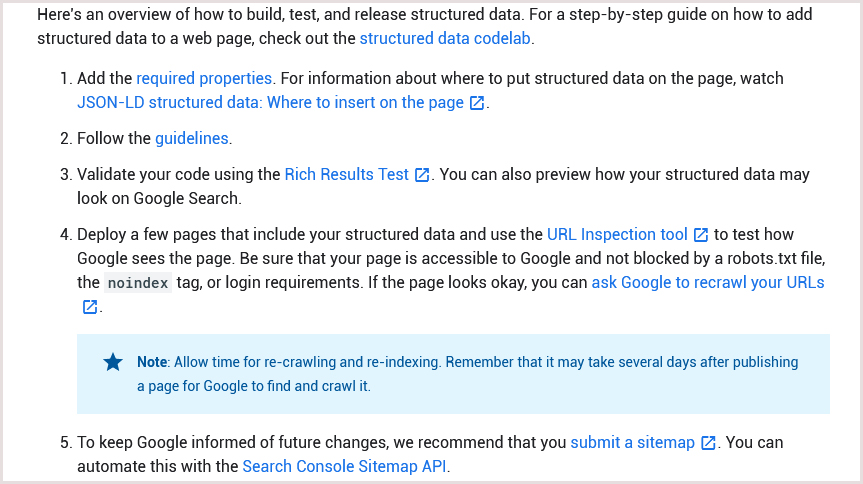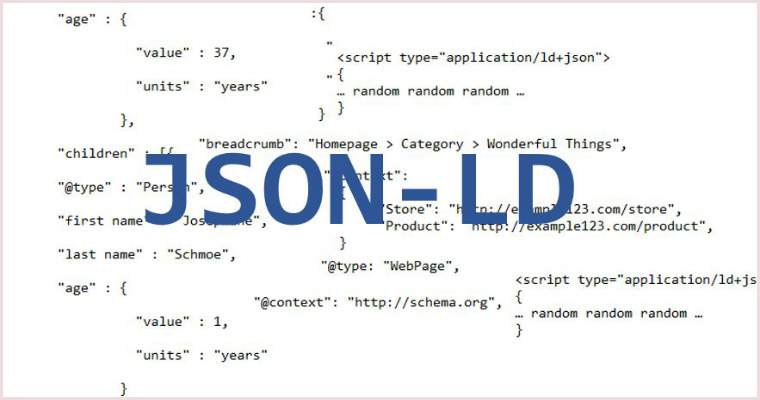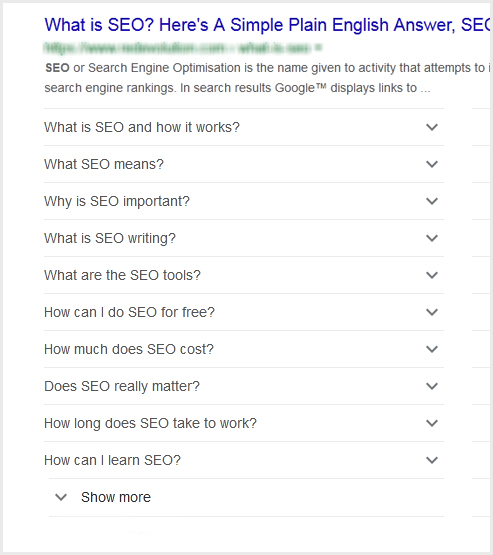How to add FAQ Schema Using Google Tag Manager?
.jpg)
Looking to add Structured Data Markup to your internal pages but not having the technical skills!! Don't worry. Here are the easy guidelines through which one can use the FAQ Schema with the help of the Google tag Manager.
The concept of Schema has emerged in 2011 in the SEO world. schema.org is a collection of Schema mark-ups or structured data mark-ups which helps Google to show extra content in SERPs. Implementing these mark-ups improves the site listings in the search engine and gathers the attention of maximum users. In short, you will gain an extra advantage, better CTR, additional Traffic, and improvement in Organic SEO results.
So how can I Implement Schema if I don't have the technical knowledge?
There is one easy to way to implement the schema i.e. Google Tag manager for which you required 2 small things:-
- Basic Coding Knowledge
- CMS access, FTP access or CPanel Access
So don't worry, if you don't have the technical expertise, you can get Your organic Results improved with basic Google tag Manager and Schema Knowledge given here:-
What is Google Tag Manager?
Google Tag Manager allows marketers to add or update tags to get the website traffic & performance evaluation. Although some technical competencies are required to read and analyze the website through Google Tag Manager, it is easy to operate as well.

We must have heard about the structured snippets which allow the users to gather relevant information according to search terms. Earlier, Google console was used to manage the structured snippets. Nowadays it also called Structured Snippets Mark-Ups or Schema Mark-Ups which allow the users to get the extra information at a glance in the form of How to & FAQ. Once the Schema implemented with the help of Google Tag Manager, this allows the webmaster to further access the content from the websites to enhance their performance in SERPs.
Although implementing FAQs Schema may not lead to more online queries or better ranking, yet it will ensure better visibility within your target SERP, enhancing the CTR, giving you more advantage in a competitive edge.
Here we are giving you some guide through which you will get the information on how to add, test and validate FAQ Schema code on a webpage without needing a web developer or any coding knowledge with the help of using JSON-LD encoding.
How to implement FAQ schema with Tag Manager
Following are the steps to be implemented to use the Schema Through Google Tag Manager:-
Step-1
Your On-Page Content Structure Should Meet the Google Guidelines
Yes, It is one of the most important updates when it comes to FAQ implementation on ON Page along with the web page content. Google has cleared the parameter for the FAQ structured Data to be shown. FAQ rich snippets results can be seen in SERPs for your website when you follow Google’s Guidelines. The screenshot is Given along with appropriate link:-

Step 2:
Create the Necessary JSON-LD Markup Code

JSON-LD is a scripting language through which publishers can publish the vital information is the form of search engine friendly language and It is also defined as Google’s preferred Mark-up Fr structure data. It is quite easy to create the FAQ schema with JSON-LD coding. To create the JSON-LD encoding you may take the help of SchemaApp.com with the JSON-LD schema generator tool. You just need to enter the properties asked by the Tool & which is required to add in Schema Mark-up, then copy JSON-LD code to your clipboard. Otherwise, you may simply refer the FAQ schema code given below, you just need to copy the exact coding, which appears on the web page with putting relevant information.
So here we are creating actual code that is required for FAQ schema needed to appear in SERPs.
FAQ Schema Code Example:
<script type="application/ld+json">
{
"@context": "https://schema.org",
"@type": "FAQPage",
"mainEntity": [{
"@type": "Question",
"name": "INSERT QUESTION TEXT HERE",
"acceptedAnswer": {
"@type": "Answer",
"text": "INSERT ANSWER TEXT HERE"
}
}, {
"@type": "Question",
"name": "INSERT QUESTION TEXT HERE",
"acceptedAnswer": {
"@type": "Answer",
"text": "INSERT ANSWER TEXT HERE"
}
}, {
"@type": "Question",
"name": "INSERT QUESTION TEXT HERE",
"acceptedAnswer": {
"@type": "Answer",
"text": "INSERT ANSWER TEXT HERE"
}
}, {
"@type": "Question",
"name": "INSERT QUESTION TEXT HERE",
"acceptedAnswer": {
"@type": "Answer",
"text": "INSERT ANSWER TEXT HERE"
}
}, {
"@type": "Question",
"name": "INSERT QUESTION TEXT HERE",
"acceptedAnswer": {
"@type": "Answer",
"text":"INSERT ANSWER TEXT HERE"}
}]
}
</script>
While creating your JSON-LD code, you will have to use your content in the form of Questions and Answers. To get this code working fine, you have to use a minimum of 3 FAQs as Google shows 3 FAQs within SERPs which can be extended via “READ MORE” options. There is no definition of Maximum FAQs so simply check the example given below in the form of an image.

Many of the times, implementing Schema through Google Tag Manager is not supposed to be ideal. I should be done at the template level if you are looking to implement it on hundreds of pages. If you have a Wordpress website, that can be done through Yoast Plugins. But If you are not good at development and you want to work own, you can simply use this Platform as it is a cost-effective and quickest way to implement FAQ schema as structured data.
Step-3
Setup & Testing of Google Tag Manager

Follow the points given:-
- Open Google Tag Manager and Configure the property you want to work on. If it is already configured, select the ‘page path” you want to work on.
- Now click back on the overview and select “Add a new tag”
- Name the Tag you want and which is easy for you to recognize as well
- Then select the tag type to “Custom HTML Tag” and paste in the code you have generated
- We only would like t use the tags on the relevant landing page instead of every page so we must have to use this code on the correct landing page. To do, we need to create a TRIGGER
- Go to the “triggering” option and Add New trigger. You may name according to your choice only which may be easy to recall in the future. name the “TRIGGER” and select Page View.
- Once selected, make sure to select “some page views” which will give further options
- Choose "page path" and select "equals" and enter in the URL slug.
- Click save and save again, and that is how you create the relevant code setup. However, we need to test this before publishing it to a live environment.
- Once it gets published, now it comes to the most exciting part which is testing & Validation. Click “Preview” on the top right which will bring up an orange bar.
- Upload your website in a different tab. You should see the tag that you created, will appear under "Tags Fired On This Page”.
- Click into the tag and see the relevant code you added along with the trigger
- Try navigating different pages to ensure if the right page is triggered, not the wrong one, otherwise, it may confuse Google.
- Once all the tags are verified on correct and relevant pages, you should publish on the workspace and give the information to Google to crawl the FAQ schema to get it live on the website.
Step-4
Now Test Your FAQ Schema!

Test and verify the Schema you put using Google's Rich Results Tool. Just enter the URL under which you have used the Schema: https://search.google.com/test/rich-results
If everything is fine you will see the Green Tick text and will be able to see the preview about how the page will look like under SERPs. The above-mentioned steps can be implemented by anyone without having development knowledge.
Sum-up:-
Google love to see the new things so try implanting structured data markup and get rewards to be on the Organic search page. This makes sense as we are trying to give extra information to the user so that they could get more visibility. Some Publishers may take it as an advert effect as they are not able to get the click on your website, as a new user will get the information in SERPs only. This concern is valid as well.
However, Research says, Rich snippets win the trust factor and may also increase the click-through rate. so we should follow the terminology which is used in competition as well. Do not let the competitor let you down. However, it may raise concern in the future as well as it will cover the SERP completely. It would become difficult to show the top10 results even. How would Google decide which website deserves to be shown in SERP and which one not? While following the current scenario, we should use the Structured data mark-up as I could sense the positive feedback. This guide will help the marketers to promote their platform beautifully who don't even know HTML code. I would say, it is the most comprehensive solution under SEO and it will provide relevant information in SERPs to the users in a cost-effective manner.

Author Sachin Gupta - Digital Marketing Consultant
Website: www.sachingupta.in
Read More: About Sachin Gupta








